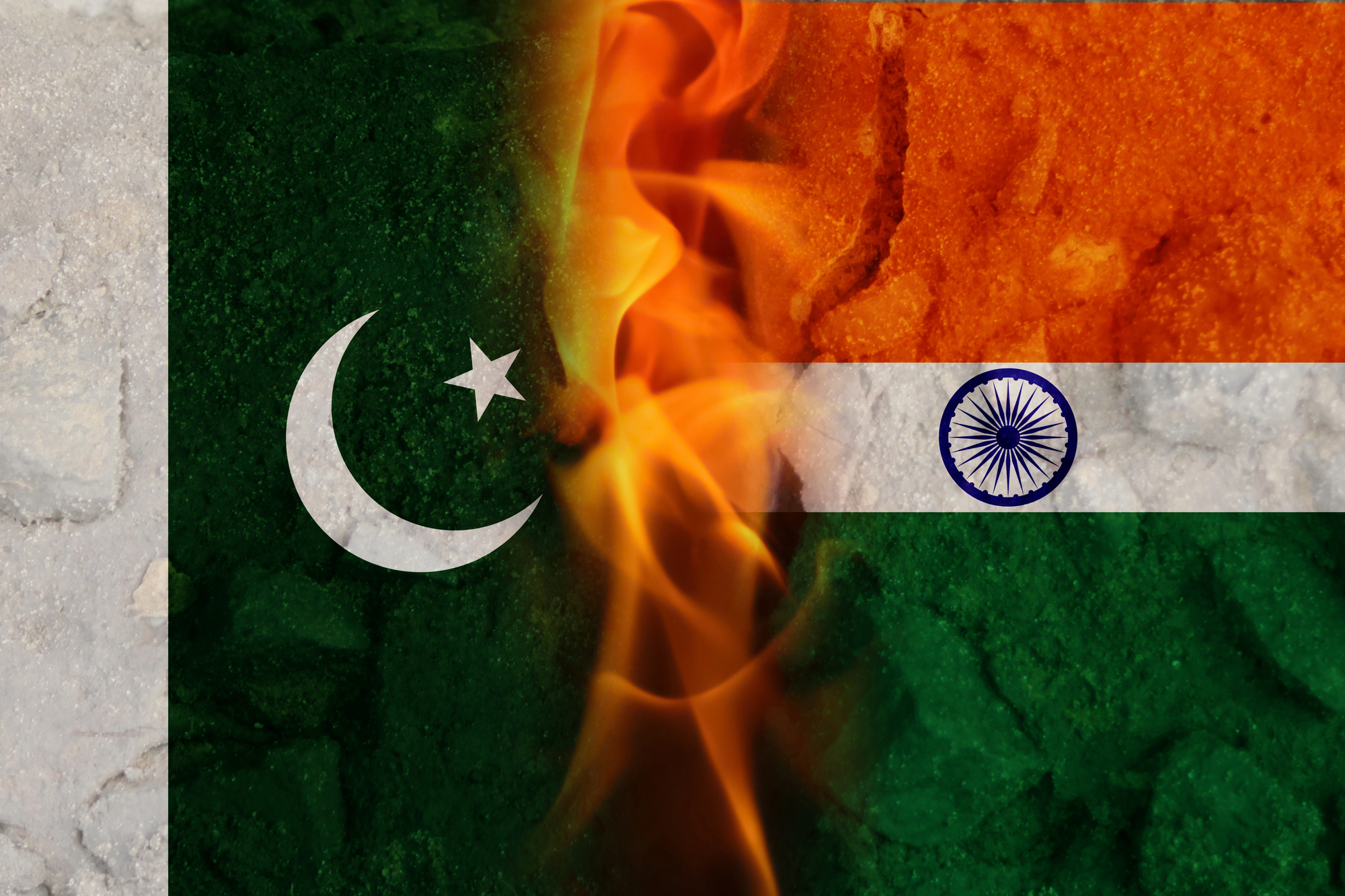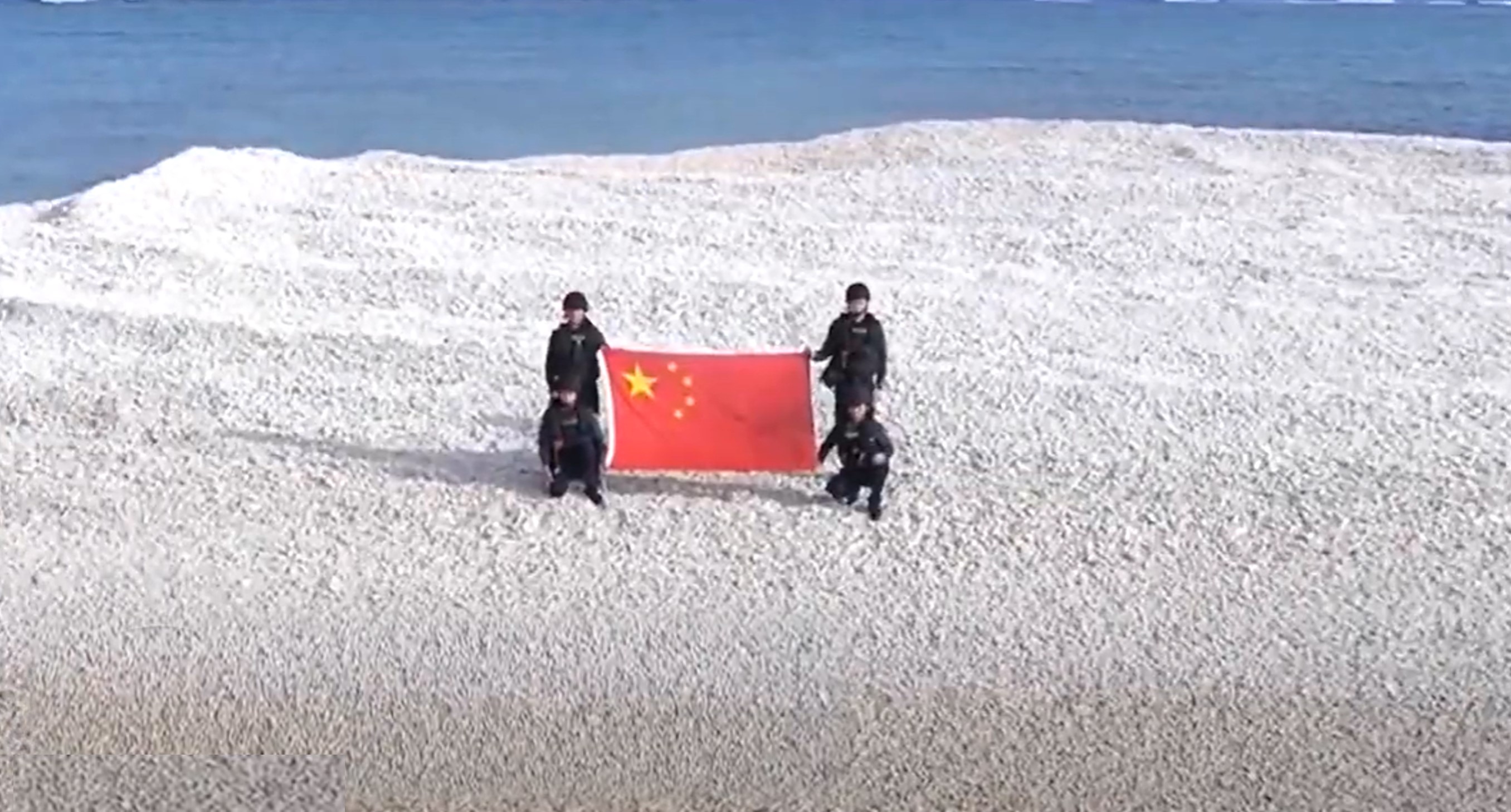The Shadow War: How the Pahalgam Terror Attack Redefined India-China-Pakistan Equation
The Pahalgam terror attack of April 2025, executed by the Pakistan-backed group The Resistance Front, was not merely another episode in the long-running saga of India-Pakistan hostility. It was a warning flare in a broader, more complex geopolitical theatre that now unmistakably includes China. Picture source: Depositphotos.
Prospects & Perspectives No. 28
The Shadow War: How the Pahalgam Terror Attack Redefined India-China-Pakistan Equation
By Jagannath Panda
The Pahalgam terror attack of April 2025, executed by the Pakistan-backed group The Resistance Front (TRF), was not merely another episode in the long-running saga of India-Pakistan hostility. It was a warning flare in a broader, more complex geopolitical theatre that now unmistakably includes China.
By and large, India’s reaction was strong, swift, and assertive beyond the border against the terrorist outfits harbored in Pakistan. The launch of Operation Sindoor, a precise military response targeting terror infrastructure across the Line of Control (LoC), marked a defining evolution in India’s deterrence doctrine, pointing to a zero-tolerance strategy against terrorism. More than a tactical strike, it was a message — India will respond with resolve, not restraint, when its civilians are attacked.
The operation drew clear parallels with the Balakot airstrikes of 2019, yet the context had shifted. The regional climate in 2025 is far more combustible, with trilateral tensions simmering in the Himalayas.
The Pahalgam incident has exposed deep-seated fractures in the regional power matrix. China’s strategic posture in the aftermath — marked by conspicuous silence, selective language, and diplomatic hedging — underscores a growing contradiction between its self-styled image as a responsible global power and its operational behavior in South Asia. By refusing to acknowledge the terrorist dimension of such attacks or to pressure its close partner, Pakistan, Beijing reveals a troubling unwillingness to act as a genuine stabilizing force in the region. The contradictions in its stand are only growing and becoming more transparent to the world by the day.
Is China truly committed to regional peace and stability, or is it bound by time-worn strategic alignments that prioritize geopolitical advantage over normative responsibility? Can a power that positions itself as an architect of global order afford to undermine its credibility by shielding a state associated with cross-border terrorism? What should be India’s strategic response to this shadow war?
Beijing’s Balancing Act: Neutrality or Strategic Collusion?
Following India’s retaliation, the world watched closely for diplomatic fallout. China’s response was a masterclass in studied ambiguity. Beijing termed India’s military action “regrettable” while conspicuously omitting any condemnation of the terror attack itself. The Chinese Ministry of Foreign Affairs made no mention of the victims in Pahalgam, nor TRF’s Pakistani connections. Instead, Beijing’s focus remained firmly on urging “restraint” and “dialogue,” echoing a playbook that has often shielded Islamabad from international censure.
This is not entirely a new behavior on the part of the Chinese leadership. Beijing has repeatedly exercised its veto power in the UN Security Council to block designations of known terrorists based in Pakistan, including Sajid Mir, a Lashkar-e-Taiba commander involved in the 26/11 Mumbai attacks in 2008. This pattern of diplomatic protection underscores China’s strategic calculus: Pakistan is more than an ally — it is a linchpin in Beijing’s South Asia strategy and a buffer against Indian regional ascendency.
What makes China’s stance especially problematic is its persistent refusal to differentiate between India’s counterterrorism actions and aggressive behavior. Chinese state media and official discourse frequently conflate Indian responses along the LoC with assertive conduct along the Line of Actual Control (LAC), crafting a narrative in which India is portrayed as a regional aggressor. This distortion allows Beijing to simultaneously align with Pakistan’s security outlook while maintaining a superficial neutrality.
Moreover, China’s behavior mirrors its broader geopolitical approach: internal threats such as “Uyghur separatism” are met with uncompromising state violence, while external threats that affect neighbors like India are compartmentalized or ignored. The selective outrage is a window into Beijing’s dual standards on terrorism and state sovereignty.
Proxy Wars and Silent Partners: Redrawing the Diplomatic Map
Beyond the rhetoric, Beijing’s alignment with Pakistan is rooted in hard interests. The China-Pakistan Economic Corridor (CPEC), the crown jewel of Xi Jinping’s Belt and Road Initiative (BRI), runs through Pakistan-occupied Kashmir. This infrastructure project is not just about roads and pipelines — it’s about strategic depth. Any Indian challenge to the territorial status quo threatens both Pakistan’s and China’s investments, thereby sealing the logic of Beijing’s indirect complicity.
This complicity extends into the diplomatic arena. In multilateral forums such as the Shanghai Cooperation Organization (SCO), China has consistently blocked Indian attempts to highlight Pakistan’s role in sponsoring cross-border terrorism. Instead, China promotes counterterrorism frameworks that align neatly with its own domestic narratives, especially those concerning Xinjiang, while conveniently avoiding issues that implicate Pakistan.
Meanwhile, Pakistan continues its strategic silence on China’s repression of Uyghur Muslims, despite its self-styled image as a champion of the Islamic world. This tacit exchange of blind spots — on terrorism and human rights — has become the bedrock of the Sino-Pakistani axis. And India, despite walking a tightrope on sensitive Chinese issues like Xinjiang, Tibet, and Taiwan, has received no reciprocation in the form of diplomatic neutrality or support.
The geopolitical geometry is clear: while India and Pakistan battle over borders and ideology, China plays the dual role of facilitator and firewall for Islamabad. Whether in backchannel diplomacy or in global institutions, China consistently acts to dilute pressure on Pakistan, reinforcing a strategic triangle that disadvantages New Delhi at every turn.
Beijing’s deliberate omission of Pakistani provocations and cross-border violence in its Operation Sindoor response press briefings suggests a calculated strategic posture. This silence reflects China’s continued alignment with Pakistan, indicating that broader geopolitical considerations outweigh any immediate concerns about regional instability. By not publicly addressing Islamabad’s role, China signals its intent to preserve and prioritize its long-standing strategic partnership with Pakistan.
A Call for India’s Strategic Realignment
In this increasingly tangled web of interests, India must reassess its China doctrine. The idea of Beijing as a potential stabilizer in South Asia has little basis in reality. Instead, China has shown a consistent willingness to prioritize its strategic partnerships and investments over regional peace or normative alignment against terrorism.
One avenue for India is to adopt a strategy of normative reciprocity. If China insists on referring to Jammu and Kashmir as a “disputed territory,” India could begin more openly addressing Chinese sensitive issues, including Tibet, Xinjiang, Hong Kong, and potentially even Taiwan, revisiting its “One China” policy. Until now, India has largely upheld a principle of “mutual sensitivity” regarding core sovereignty concerns. While China has been increasingly assertive in internationalizing the Kashmir issue — whether through UN Security Council interventions, statements aligning with Pakistan, or selective cartographic provocations — India has avoided reciprocal commentary on China’s sensitive regions. This asymmetric restraint has allowed China to shape narratives unchallenged, while denying India the same deference on issues central to its national unity.
Engaging Taiwan more openly — especially on trade, technology, and democratic solidarity — aligns India with other democracies like the U.S., Japan, and parts of Europe that have gradually normalized unofficial ties. Strengthening ties with Taiwan also offers India access to high-end manufacturing, especially in semiconductors, where Taiwan’s TSMC dominates global supply chains, critical for India’s tech and defense sectors. A closer India-Taiwan dynamic could be used as part of a broader Indo-Pacific strategy to counterbalance Chinese assertiveness in the region, especially when coupled with defense dialogues like the Quad.
Explicit moves on Taiwan would likely provoke strong diplomatic and possibly economic retaliation from Beijing. This could take the form of border pressure along the LAC, trade restrictions, or cyber disruptions. Any move on Taiwan would have more impact if coordinated with partners like the U.S., Japan, or Australia. A unilateral shift may yield limited strategic gain while exposing India to disproportionate costs.
It is therefore imperative that India must continue to invest more robustly in multilateral and minilateral coalitions that exclude or counterbalance China, such as the Quad, the India-Japan-Australia trilateral, and enhanced EU engagements. India’s aspiration to be recognized as a major international power, including in the “Global South,” depends not solely on its material capabilities but also on its normative influence, particularly in shaping global discourses on terrorism. In the aftermath of the Pahalgam incident, New Delhi may need to recalibrate its approach by intensifying collaboration with global norm entrepreneurs, including middle powers across Europe and Asia, as well as transnational civil society and multilateral institutions. Moreover, India’s leadership roles in forums such as the G20 and BRICS present strategic platforms through which it can reframe regional security narratives and assert its vision for counterterrorism norms.
Domestically, India must prepare for the long haul. The possibility of a coordinated two-front scenario — with Pakistan engaging in asymmetric warfare through proxy actors and irregular tactics and China providing strategic and diplomatic cover — is no longer hypothetical. Preparing for this evolving threat environment requires India to adopt a comprehensive and long-term security posture, encompassing military modernization, institutional resilience, and societal preparedness. Enhancing border infrastructure, upgrading intelligence and surveillance capabilities, and fortifying strategic deterrence must be non-negotiables in India’s defense roadmap.
Sustaining a prolonged state of readiness requires a resilient defense-industrial base, robust supply chains, and financial planning. India must continue reforms to reduce dependence on foreign arms imports, incentivize indigenous R&D, and create strategic reserves for critical materials. Further, building robust logistical networks, especially in border states and high-altitude regions, will improve troop mobility and sustain long-term deployments. Civil-military synergy in infrastructure projects such as roads, airfields, and telecommunications along both western and eastern frontiers is essential.
The shifting threat landscape demands that India move beyond reactive postures. Both Pakistan and China are adept at leveraging information warfare and disinformation to influence public opinion and sow discord. India must invest in counter-disinformation capacities, strategic communication, and public awareness campaigns to build regional and societal resilience against foreign psychological operations, where Taiwan could emerge as a stronger partner.
New Delhi must significantly enhance its capabilities in narrative warfare — a strategic effort to shape perceptions, control the discourse, and influence international opinion. This involves not only countering adversarial narratives but also proactively framing its own story in a manner that resonates with global audiences. India’s case against Pakistan-based terrorism, as well as China’s tacit support through diplomatic silence or selective framing, must be articulated with clarity, credibility, and moral authority.
To be effective, this narrative must be disseminated across multiple global platforms — from the United Nations and international media to think tanks, academic forums, and digital diplomacy channels — to expose the regional destabilizing roles of both Pakistan and China, and to align international sentiment with India’s security concerns and normative positions. The decision to send delegations to 32 nations is a strong first step. Publishing credible evidence, such as satellite imagery, financial trail disclosures, or intercepted communications, can further strengthen the factual basis of India’s narrative and pre-empt counterclaims.
Conclusion: Pahalgam as a Turning Point
The Pahalgam terrorist attack will be remembered not just for its human toll, but for what it revealed about the shifting tectonics of regional power complexities. It was a moment of clarity: India is not just facing a belligerent neighbor in Pakistan, but also contending with a cunning and double-standard power in China that is willing to obscure terrorism behind the veil of strategic self-interest. Increasingly, China’s actions — or calculated inactions — are rendering its strategic contradictions more visible to the international community, challenging the coherence of its South Asia policy and weakening its claim to impartiality in regional conflict resolution. The path ahead for India requires more than conventional military readiness; it calls for a fundamental reassessment of the strategic assumptions underpinning India's approach to China, particularly regarding Beijing’s role in shaping, enabling, or deferring regional crises.
New Delhi’s challenge is two-fold. It must deter asymmetric threats from across the border, and it must decode and counteract the quieter, more insidious enablers of that threat. That means not just stronger borders, but sharper diplomacy. Not just better arms, but better arguments. Narrative warfare, if conducted strategically, allows India not just to defend its position but to shape the global agenda on terrorism and regional order, reinforcing its claim to normative leadership as a rising power.
Pahalgam may have been a tragedy for India, but it is also an inflection point. A new foreign policy realism must follow. Because in this geopolitical theatre, the shadows are as dangerous as the swords.
(Dr. Jagannath Panda is the Head of the Stockholm Center for South Asian and Indo-Pacific Affairs at the Institute for Security and Development Policy in Sweden; and a Professor at the University of Warsaw. He is also a Senior Fellow at The Hague Center for Strategic Studies in the Netherlands and the Series Editor for Routledge Studies on Think Asia.)



